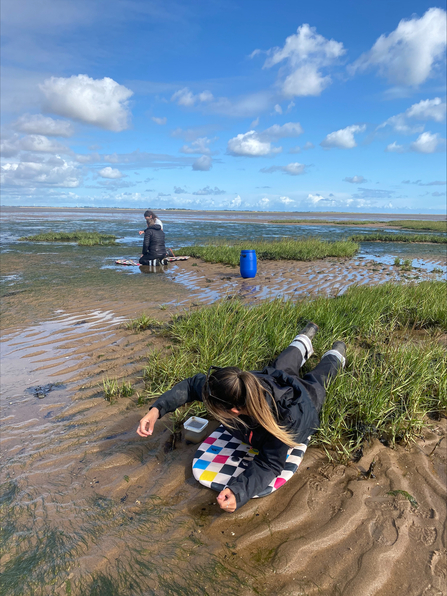Over the past 6 months, we have had the privilege of working alongside colleagues at Lincolnshire Wildlife Trust (LWT) and those at our partner companies: The Crown Estate, Natural England and Ørsted. This internship has allowed us represent Lincolnshire Wildlife Trust at conferences like ReMeMaRe 2023 and The Wildlife Trust’s Federation Conference, and get involved with field work such as seal wardening, seagrass seed collection and oyster biometric. We’ve also had the opportunity to assist with public engagement events: sea dipping at Gibraltar Point, and running the Wilder Humber stand at LWT’s 75th Anniversary Festival. Alongside this, we have attended training sessions with The Crown Estate, improving our business writing and presentation skills, visited Ørsted’s Operations & Maintenance Hub in Grimsby and attended Natural England’s Offshore Wind Event in Brighton. On top of all these incredible experiences, we have completed a total of five research projects, which we couldn’t have done without the support and input from those at LWT and our partner companies. Thank you to everyone that’s helped us and provided us with such great experiences throughout the internship. We are now on the lookout for our next roles and can’t wait to apply the skills we’ve learnt throughout the internship in our future careers.
Our Favourite Experiences at Lincolnshire Wildlife Trust
Sian Peace
Favourite moment: Wilder Humber Seagrass Seed Collecting
It is incredibly difficult to pick a favourite moment from my time as an intern, but something I’ve thoroughly enjoyed has been the opportunity to participate in hands-on field work. We’ve been lucky enough to get involved with several field activities including beach cleaning, sea-dipping and sea-watching. A highlight for me was having the opportunity to assist in seagrass seed collection at Spurn Point, contributing towards the Wilder Humber programme. Ørsted has partnered with both Lincolnshire and Yorkshire Wildlife Trust to carry out this seascape project, which aims to not only restore 30 hectares of seagrass, but also oyster reef, saltmarsh and sand dunes.








